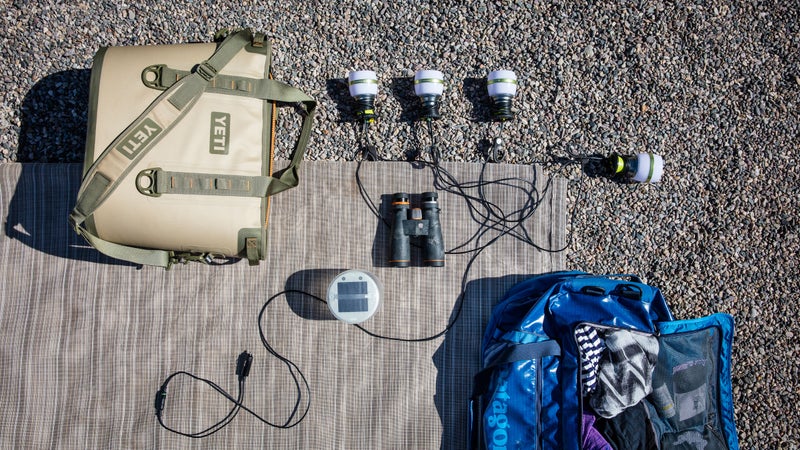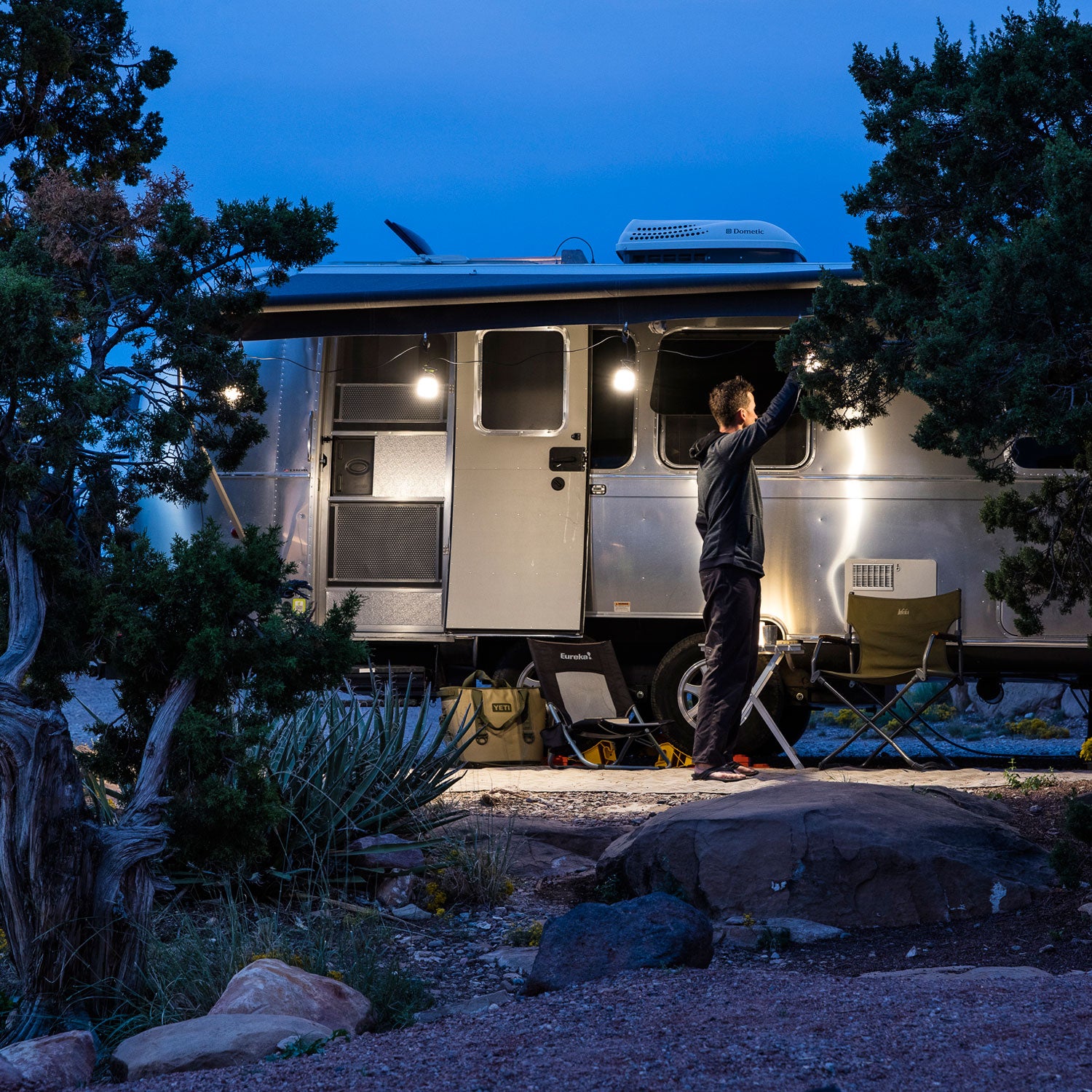Easing into a nomadic lifestyle is about figuring out the things you need and the ones you don’t, the comforts you want and those you can do without. Then you eschew all the crap that’s at home—clogging up your life and existence. In a 23-foot trailer, there’s only room for the necessities.
For us, those are: a few sets of clothes (fewer than you think because we have just one drawer apiece and wear the same things day in, day out); computers and camera gear and all the solar garb to power it; riding gear, plus two mountain bikes; hunting and fishing equipment, because we prefer to eat the meat we harvest whenever possible; a few good paper books, which we still favor over digital; and our trusty, silver bourbon mugs, given to us by a dear friend and put to good use during the fine sunsets we frequently find.
The Modern Nomad
 Our guide to living on the road and spending more time outdoors—without quitting your job.
Our guide to living on the road and spending more time outdoors—without quitting your job.I got to thinking recently about my ideas of the necessities now versus when we set out in April. Road life, with its space constraints, has made me look at every single thing I own and ask the question, “Is this improving my life?”
If not, it goes.
We’ve purged clothes, trimmed our shoe collection by half, subsist just fine with a cast iron Dutch oven as our only cookware, and manage—happily—on a tiny fraction of the things we had at home. And each time we pass through Santa Fe, I find myself taking more and more bags to Good Will. Someday soon, our house will be empty and ready to rent, and we’ll have everything we need in under 200 square feet. But even as we’ve purged, I’ve come to savor the possessions we have with us. And I’ve also made a few calculated purchases of things I never would have thought we needed when we set out, but that I now feel better our daily experience.

If there is one thing we could not do without it’s the ($350) cooler bag. Yes, Artemis has a fridge, but on long transfer days when it can’t stay on, particularly toasty times when we aren’t connected to electricity, the occasional instance we forget to fill the propane (which powers the fridge when we’re dry camping), or in the case of some malfunction (hasn’t happened yet, thankfully), this soft-sided, 30-liter cooler is the ultimate insurance against spoiled food. There are cheaper models, but the knockoffs tend to break down and spring leaks quickly. And besides, nothing holds cold like the Yeti. It’s kept ice frozen for almost a week of 70-degree days. Best of all, it squashes down and stows under the bed.
Artemis also has plenty of light power, and I really didn’t want to carry extras. However, once I got these ($40), I was hooked. As I’ve said before, battery power is the biggest limitation for how long we can stay in the field. And since these 12-volt lights run off the Goal Zero solar generator, we can have light at night that’s renewable each day and doesn’t drain the Airstream. On their low setting (100 lumens, which is plenty to light the entire trailer), they draw less than one watt, which means we can have warm, even light almost indefinitely. The design allows for spotlight or area lighting, depending on how you screw the shade together, and you can chain up to eight of them with built-in, adjustable cords for more light. Incidentally, we’ve also taken to carrying a few ($20) as they are light, simple to use, tuck neatly away, and pull double duty for bike- or backpacking.
Jen insisted on getting the ($135), which I thought was totally extraneous until the very first day we used it. Running the length of the trailer, it’s almost like a portable patio and provides space for morning yoga, post-ride stretching, sorting gear and equipment, and just lounging in the sun. It also helps minimize the dirt and mud we track into Artemis.
($1,000) are an extravagance, but I’ve come to think of them as the Modern Nomad equivalent of TV. (We haven’t watched an episode or movie, except in theaters, since last spring.) I can sit for hours and glass the hillsides and surrounding forests, watching animals, searching out people on the distant horizon, or just observing the colors and shapes in the shifting light of day. By studying a place through the lens, I get to know it better than I otherwise would. At $1,000, the B2s aren’t cheap—the company has equally excellent, shorter, less expensive B1s and B3s—but they are a bargain compared to the competition. I have used Swarovskis, Leicas, and other high-end binos over the years, and I can honestly say that the optics on the Mavens, which cost less than half of those heritage brands, are clearer, sharper, and brighter. As with all good glass, it’s an investment, which is to say, I expect to own these the rest of my life.
As travel journalists, we’ve owned good luggage over the years, but of course big, bulky suitcases won’t fit into Artemis. So I recently traded it all in for two ($150). The TPU-laminated ripstop polyster is as burly as anything we’ve ever owned, and waterproof to boot. There’s a shoulder strap, two removable backpack-style straps, and the whole thing rolls up to about the size of a rugby ball, which again fits under the bed. I’ve been to Europe twice in the last two months, and Jen has also been to Canada, and each time we’ve been relieved to have a way to pack and go from the road.
I’m not telling you to buy this gear. These are necessities to us—maybe not to you. The point is that one unexpected and pleasant side-effect of moving into Artemis has been the way it has motivated us to consider whether we want, need, and appreciate every single possession.
Oh yeah, and those silver bourbon mugs, they’re not going anywhere—too many sunsets ahead to do without them.


